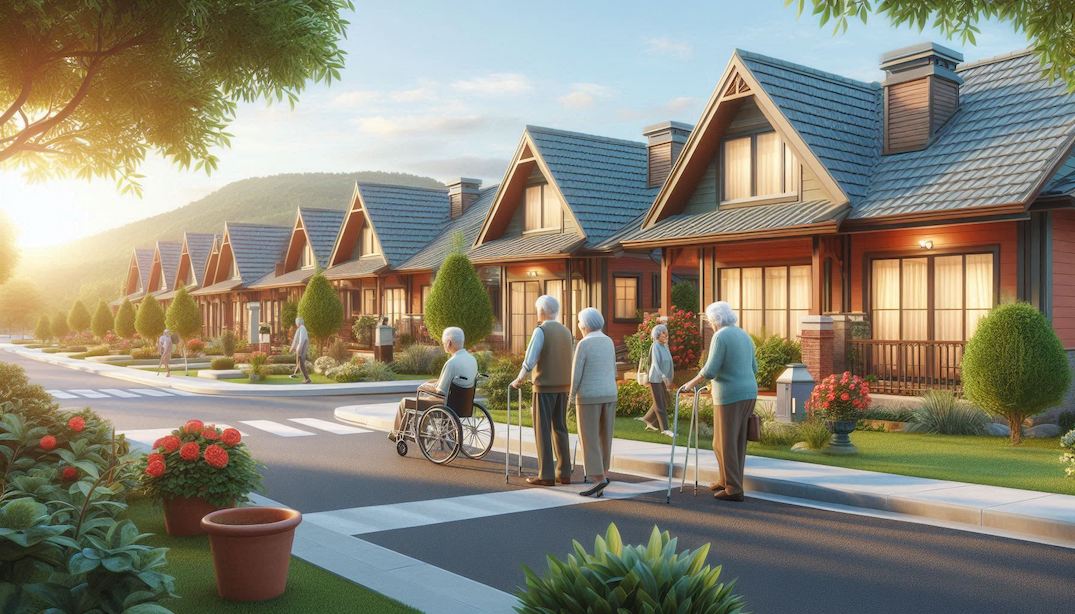
When seniors downsize for retirement, it’s crucial to make smart home-buying decisions to avoid costly repairs and ensure the home meets long-term needs. Here’s a detailed breakdown of potential red flags and tips to avoid them:
1. Aging Roof
Red Flags: Look for missing, cracked, or curling shingles, dark streaks, moss growth, or sagging areas. These signs indicate an aging roof that may need replacement soon.
Average Repair/Replacement Cost:
- Roof repairs typically cost $300–$1,500 depending on the extent of damage.
- A full roof replacement averages $7,000–$10,000 for an asphalt shingle roof, but it can be higher for more expensive materials like metal or tile.
Advice: Ask for the roof’s age and if it has been maintained. A home inspector can assess the roof’s condition. If the roof is near the end of its life, factor replacement costs into your offer.
2. Foundation Issues
Red Flags: Check for cracks in walls or floors, gaps between windows and walls, a leaning chimney, warped floors or ceilings, and counters or cabinets pulling away from walls. These signs could indicate serious foundation problems.
Average Repair Cost:
- Minor foundation repairs: $500–$3,000 (for crack repairs or slab jacking).
- Major foundation repairs: $10,000–$25,000 (for underpinning or rebuilding sections of the foundation).
Advice: Get a professional structural inspection if any signs are present. Foundation issues can severely affect the home’s value, and repairs can be costly. Avoid homes with significant foundation problems unless the seller is willing to adjust the price.
3. Termites
Red Flags: Termite damage often appears as hollow-sounding wood, mud tubes around the foundation, bubbling or peeling paint, or small piles of wood dust near wooden surfaces.
Inspection: Request a termite inspection before purchasing. A professional inspector will check for hidden damage in attics, basements, and wooden structures, which can be challenging for an untrained eye to detect.
Average Cost:
- Termite inspection: $100–$250.
- Termite treatment: $500–$1,500 depending on the size of the infestation.
- Structural damage repairs from termites can range from $3,000 to $8,000.
4. Windows
Red Flags: Windows that are difficult to open, have broken seals, or allow drafts could indicate poor insulation or water damage. Fogging between panes suggests the seal on double-pane windows has failed.
Average Repair Cost:
- Window repairs: $100–$500 per window.
- Window replacement: $300–$1,500 per window depending on the material and size.
Advice: Inspect all windows and doors to ensure proper sealing and operation. Poorly insulated or damaged windows can lead to high energy bills and discomfort.
5. Water Damage
Red Flags: Look for discoloration on ceilings and walls, moldy or musty smells, water stains, peeling paint, or water puddles in the basement. Water damage often results from roof leaks, plumbing issues, or exterior water seepage.
Average Repair Cost:
- Minor plumbing repairs: $150–$500.
- Roof leak repairs: $300–$1,200.
- Mold remediation: $500–$6,000, depending on the severity.
- Water damage restoration: $1,200–$4,000 on average.
Advice: Hire a home inspector to check for signs of water damage, especially in basements, crawl spaces, and attics. If damage is found, ask for professional opinions on repairs and potential mold problems.
6. Will Your Home Last Throughout Retirement?
Considerations: As you age, your physical needs may change, so it’s important to choose a home that can adapt with you.
- Look for homes without major structural issues that may require expensive repairs in the future.
- Energy-efficient homes with durable materials (like new windows, updated HVAC systems, and reliable insulation) can save on long-term maintenance and utility costs.
Advice: Factor in the longevity of the home’s major systems (roof, foundation, HVAC, plumbing) to ensure it won’t require frequent or costly repairs as you age. A newer home may offer peace of mind for low maintenance.
7. Mobility and Accessibility
Red Flags: If the home has stairs leading to the entry, second-floor bedrooms, or narrow hallways, it might become less accessible as you age.
Key Features:
- Single-level homes are ideal for aging in place.
- Walk-in showers with grab bars, wide doorways, and no-step entries ensure easier access.
- Avoid homes with steep driveways or excessive stairs unless modifications can be made.
Advice: Ensure the home has or can easily accommodate aging-friendly modifications. Consider homes with universal design features that will remain functional even as mobility becomes more limited.
General Tips:
- Get a Home Inspection: Always get a comprehensive home inspection by a qualified professional. This will help identify any hidden issues that could become costly.
- Factor in Long-Term Costs: Consider not only the current condition of the home but also the ongoing maintenance and any possible modifications needed for aging in place.
- Don’t Rush: Take your time evaluating the home’s condition and ensure it fits your long-term financial and physical needs.
By paying attention to these red flags and following these steps, you can make a well-informed decision when downsizing for retirement, ensuring the home you choose will be safe, comfortable, and affordable throughout your retirement years.
-Nguyễn Bách Khoa-
